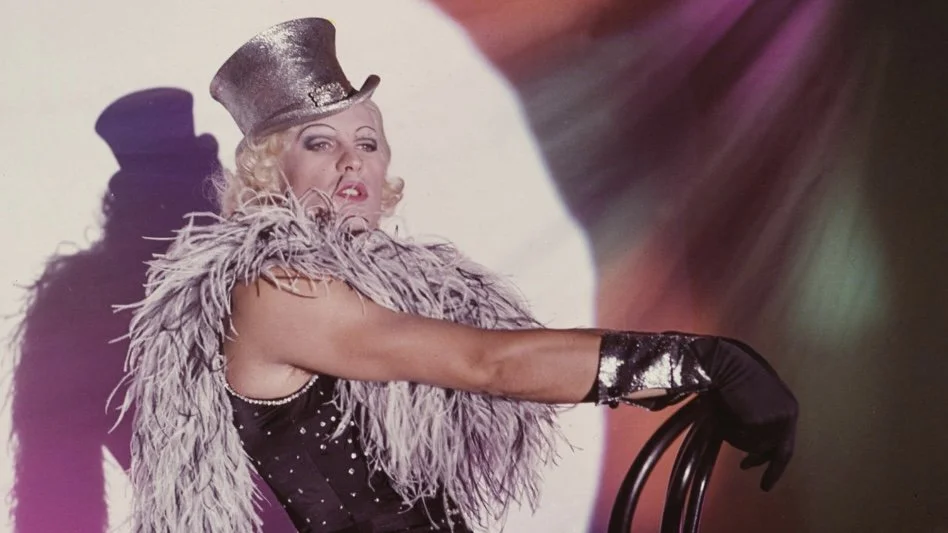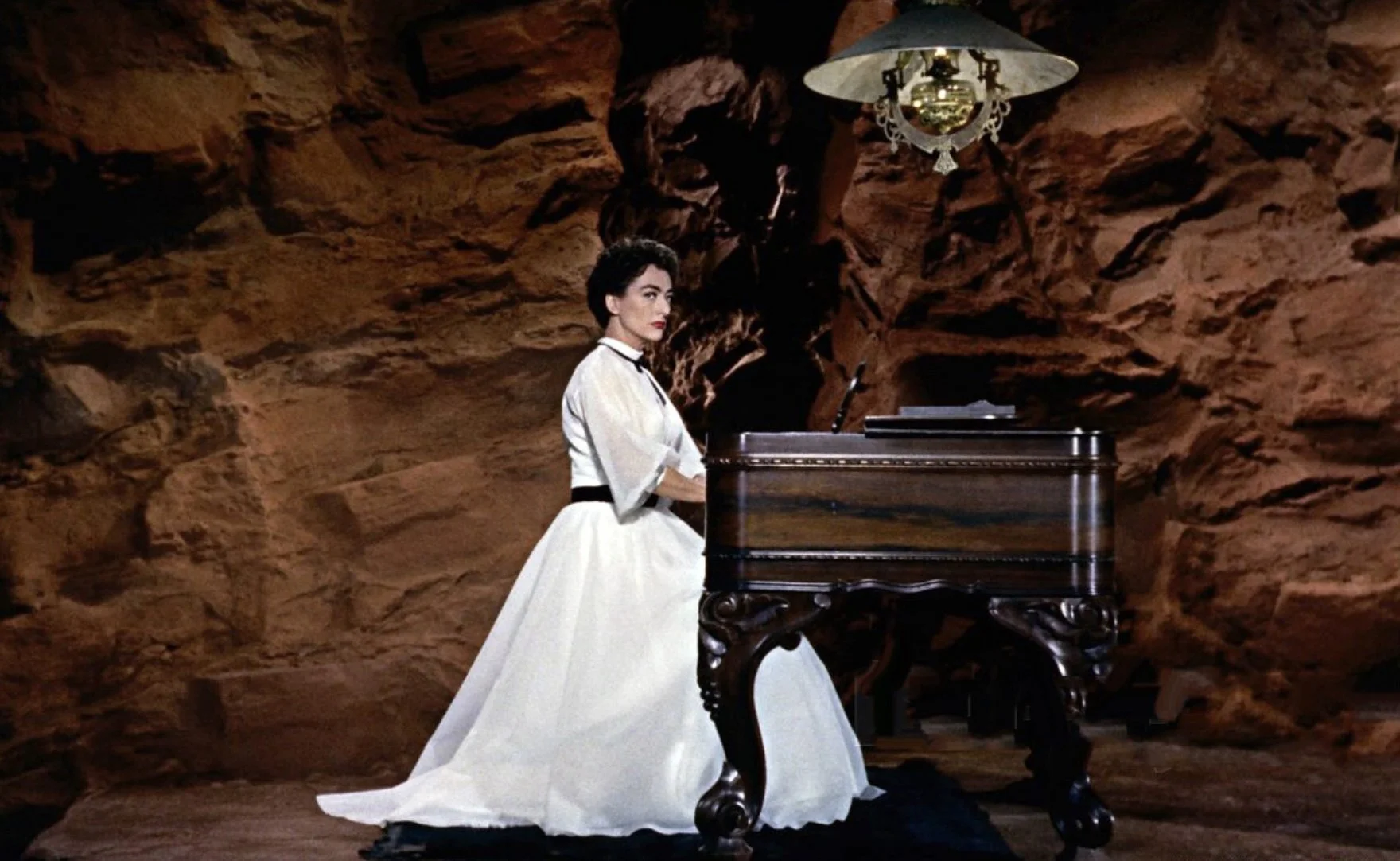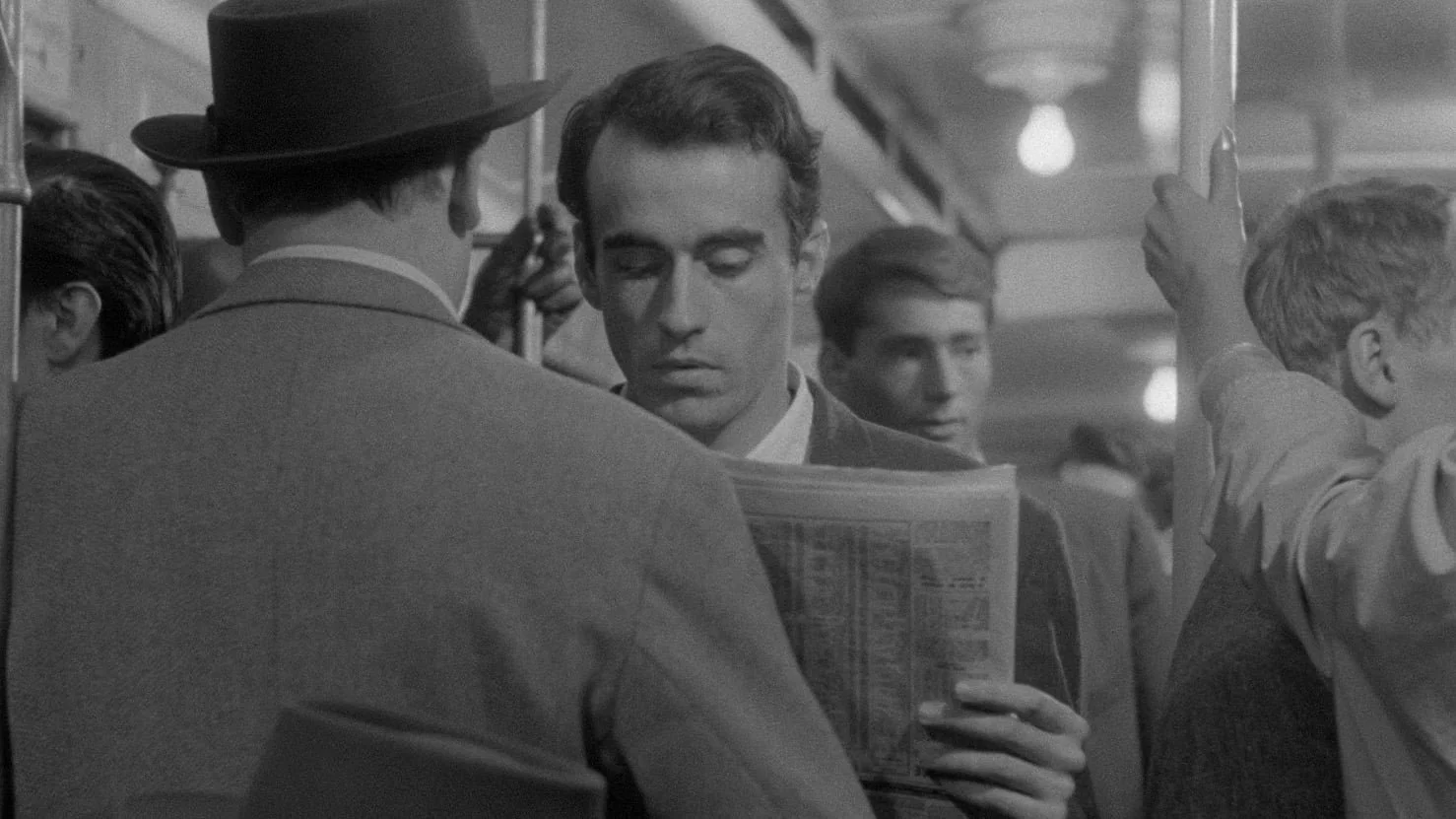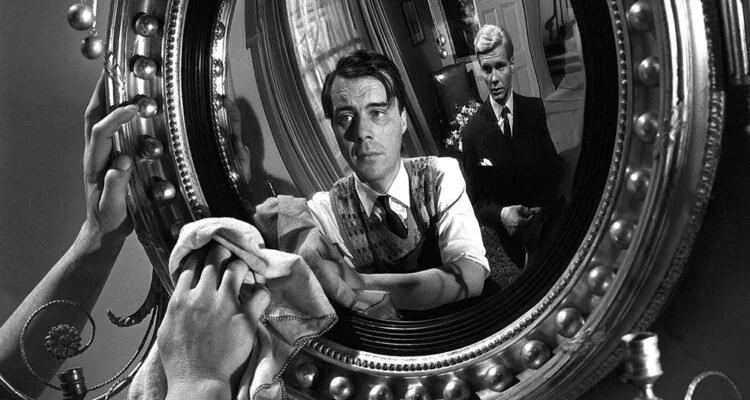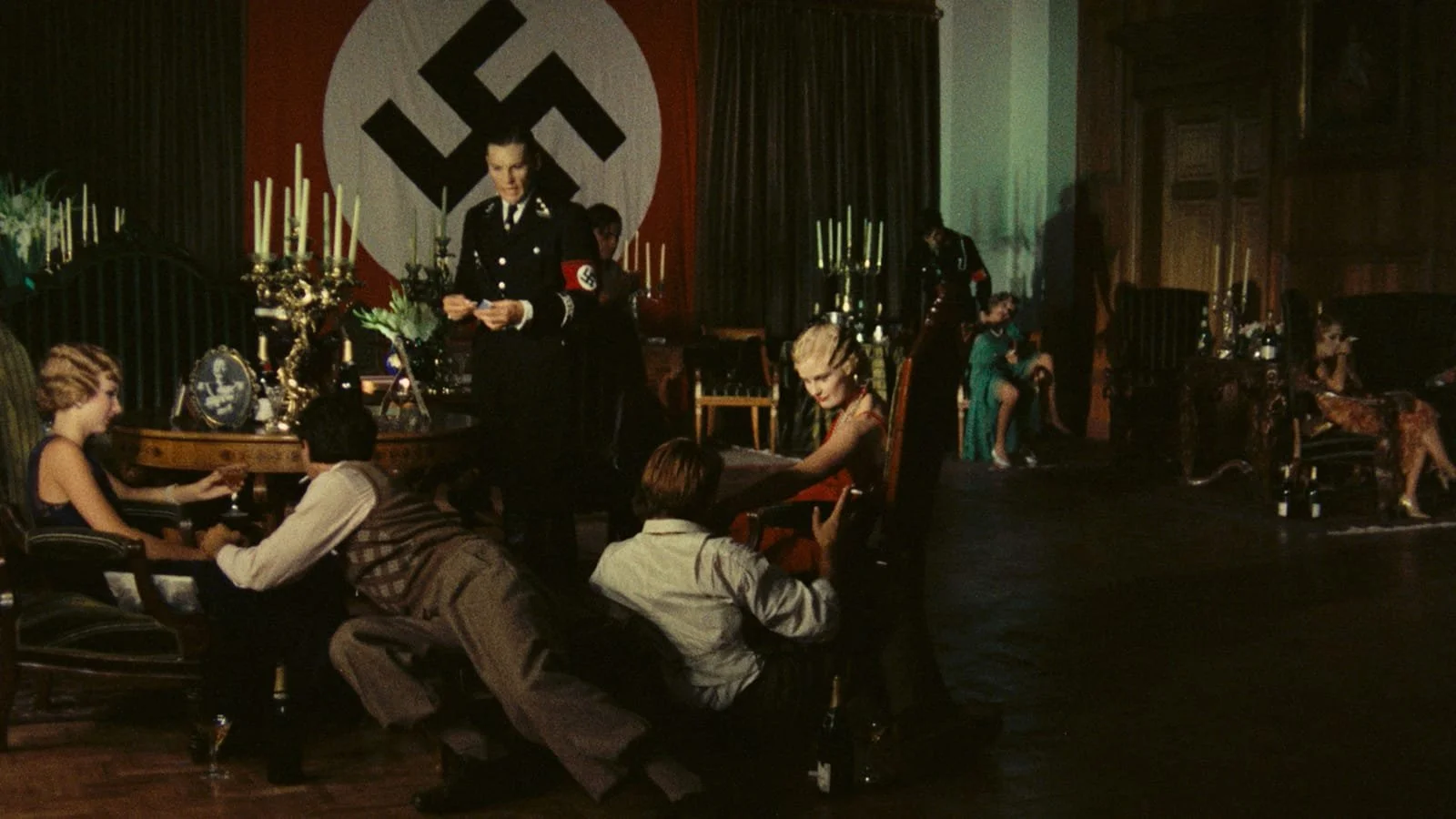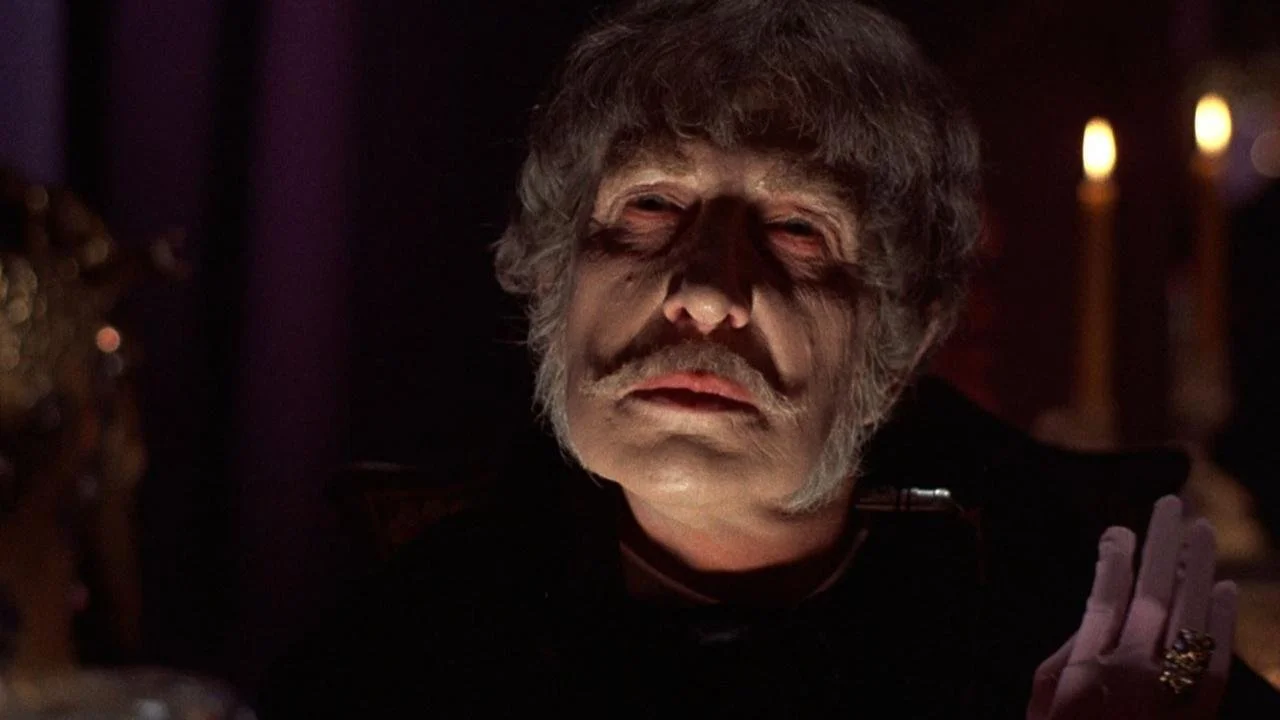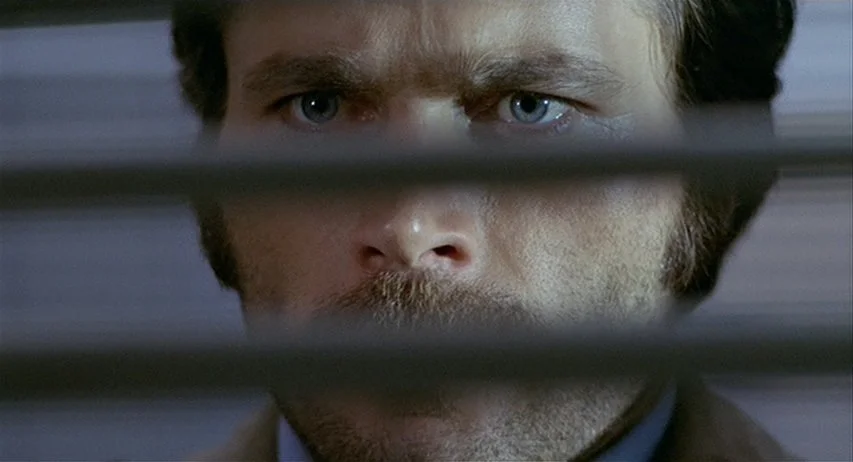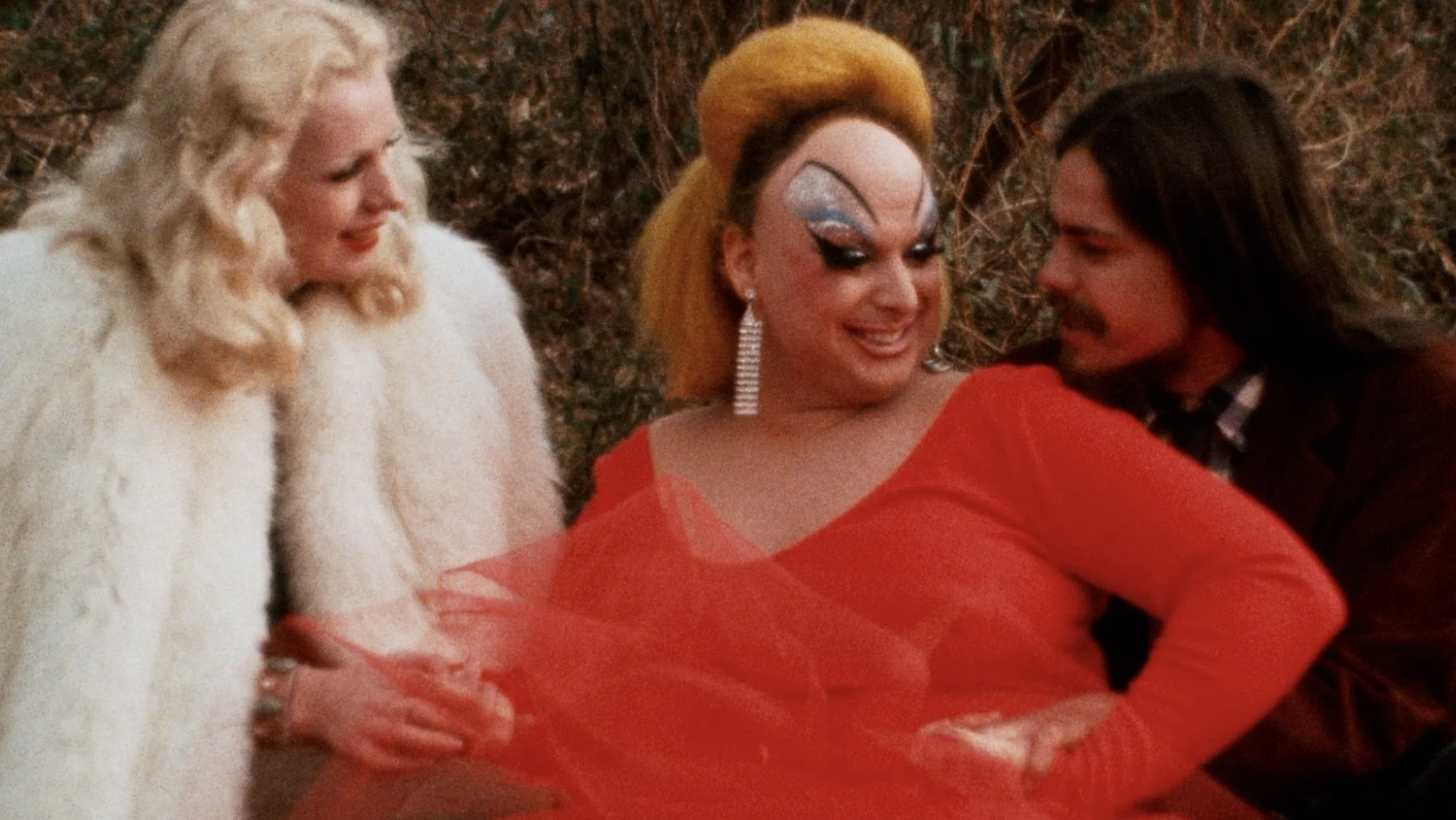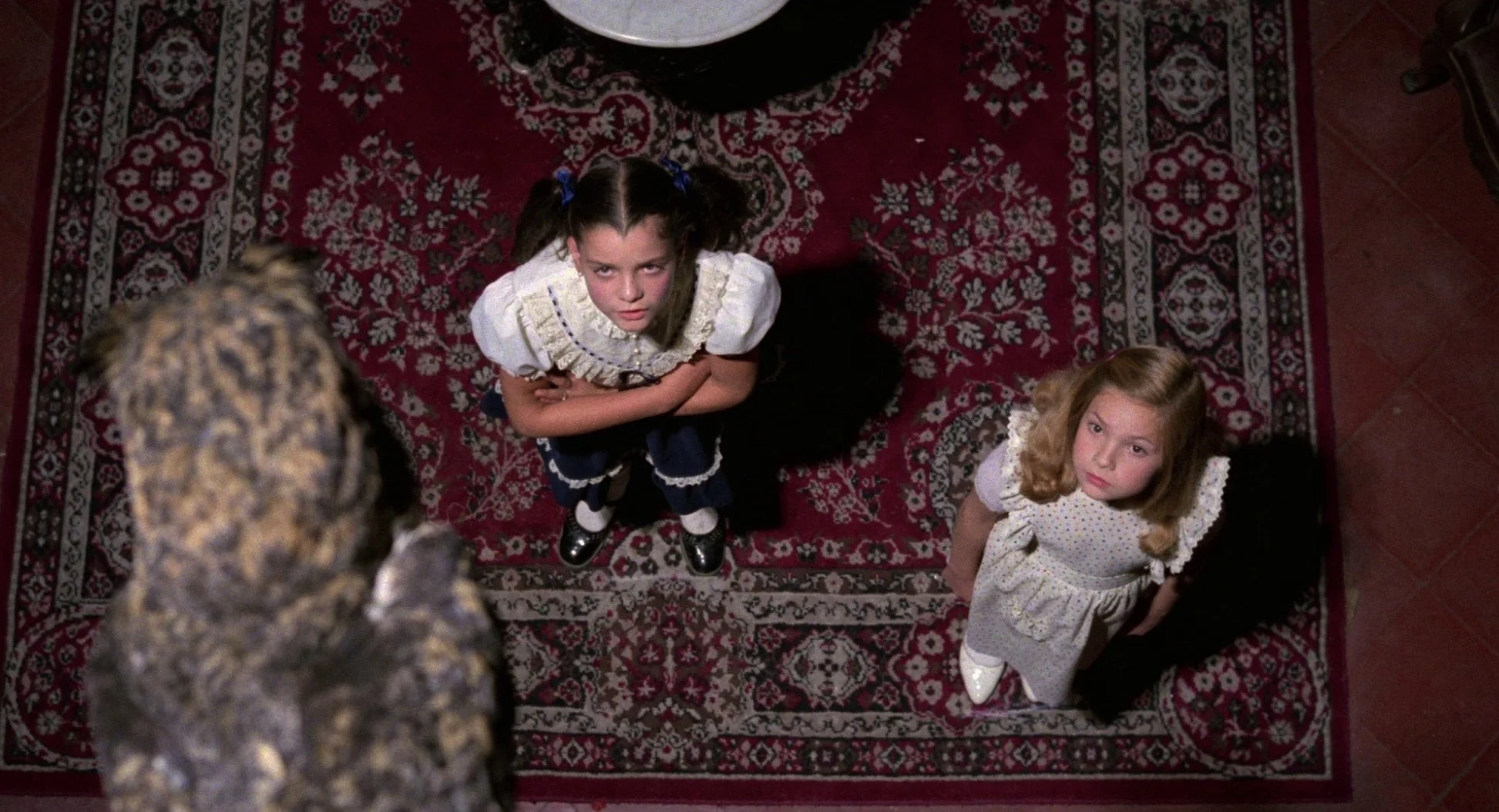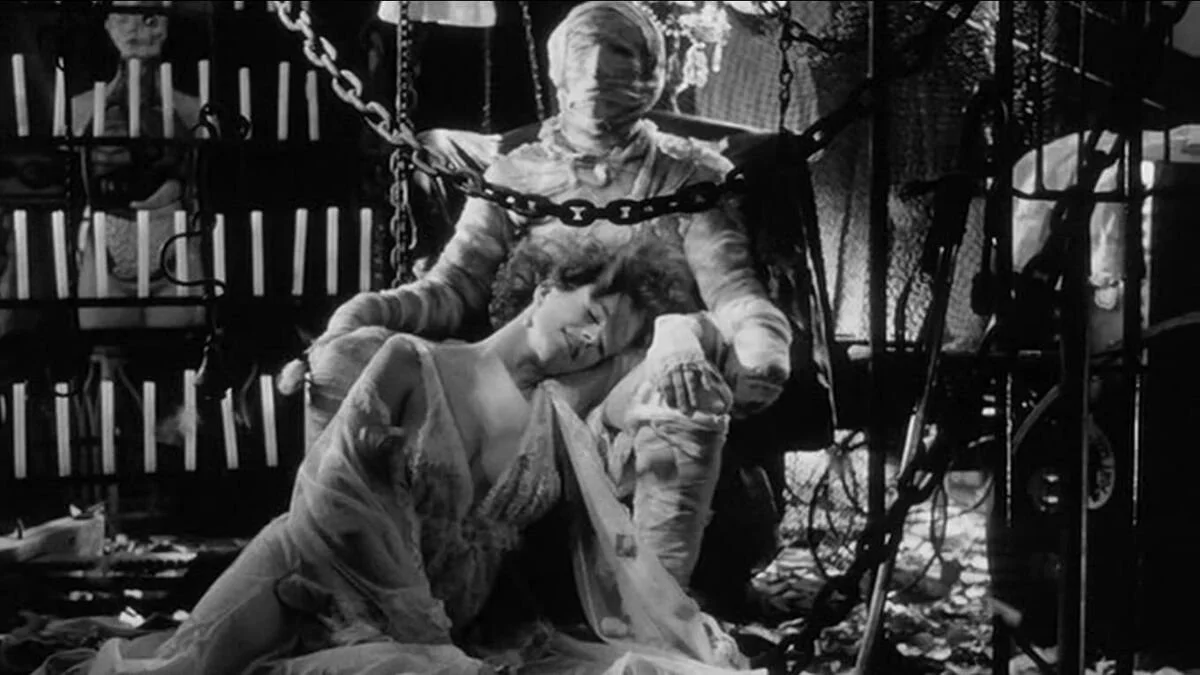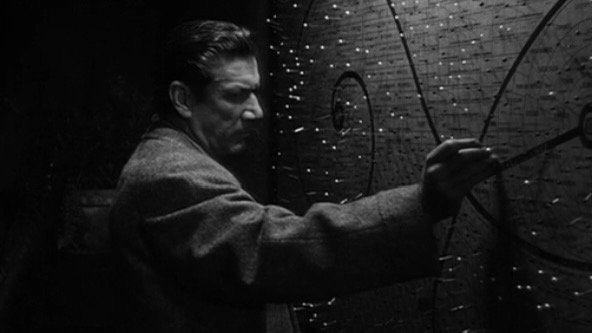Top 10 — New-to-Me Films of 2023
Every year, I decide that I cannot in good conscience do a Top 10 Films of [Current Year] list. At least, not by December 31st of that year. There’s always so much I still haven’t seen! Plus, most of the stuff I watch was released before I was born. So, creating a list of the best films from the past that I watched for the first time is usually more appropriate.
I watched 360+ movies in 2023, according to Letterboxd. But narrowing that figure down to ten titles was not as difficult as I expected it to be—because every picture included below is fan-fucking-tastic, in my opinion. And several of them are pretty damn queer, I’m pleased to say.
Well, without further ado, here are my Top 10 New-to-Me Films of 2023, presented in chronological order:
Johnny Guitar (1954)
USA
dir. Nicholas Ray
Nicholas Ray’s bisexuality is CONFIRMED, babes! There is no way a non-queer director could’ve made such a luscious, melodramatic western as successfully. Johnny Guitar left my eyes transfixed and my jaw on the floor. Ray toys with genre conventions and gender norms so well—and he certainly knows how to incorporate color into his compositions. Every primary and secondary hue manages to pop somehow. And oh my god, Joan Crawford looking stunning in white is what I want to see when I reach Heaven (lmao as if I’m going there).
Joan Crawford is so damn powerful as Vienna, a bad bitch who slings guns, plays piano, and owns a saloon. I reckon a lot of the film’s queerness is due to the very presence of Crawford herself. Even with all of Ray’s flourishes, I’m not sure if the film would’ve radiated the same with someone like Claire Trevor, Dorothy Malone, or even Barbara Stanwyck in front of the lens. Mercedes MacCambridge is also perfectly cast and so fuckin’ fierce as the villainous Emma Small, who’s clearly meant to mimic the Red Scare of the era, using her whole bloodthirsty posse to violently ravish vanquish Vienna. The s e x u a l t e n s i o n is thick.
Bottom line: Anyone who considers Johnny Guitar a lesser western is homophobic!
Pickpocket (1959)
France
dir. Robert Bresson
My first Bresson, ever!
Bresson directed a dozen or so films in his lifetime, and almost half of them have appeared on Sight and Sound’s decennial Greatest Films of All Time list at least once. That’s pretty freaking impressive. So, to be honest, I can’t believe it’s taken me this long to check one out—and, thankfully, I picked a great place to start (not that there’s a wrong way to go about it, of course) because Pickpocket rules. It’s engineered so goddamn well. I found myself tensing up several times, and its crisp 75 minutes absolutely fly by.
I wonder what it says about me that I tend to enjoy movies that others consider cold, emotionally distant, mechanical, etc… It’s especially interesting here because I, perhaps weirdly, find this movie to be highly erotic. I dunno, the scene where the men practice pocket-picking techniques on each other really turned me on. What can I say, Martin LaSalle’s impassive visage and detached presence work for me! So, as far as I’m concerned, Pickpocket is bisexual cinema.
The Servant (1963)
UK
dir. Joseph Losey
Oh, this is 100% My Shit™.
Few handle class warfare quite like the Brits, and few writers plot the shifting of powers as deftly as Harold Pinter, who paints his scenarios with a wicked pen. Dirk Bogarde delivers one of his strongest and most cunning performances as the titular servant attempting to incrementally hijack the household and dominate his master, played by James Fox. The homoerotic undercurrents are palpable, but could they have been more explicit? Sure. But somehow the restraint of the era made the dynamic between the two all the more stimulating to me.
From behind the lens, Jospeh Losey executes it masterfully. I’ve been a fan of Losey’s work ever since I discovered Accident (1967) on the Criterion Channel a few years ago. I adore his penchant for using the camera to express a character’s inner turmoil, or degradation, often at the hands of another character. Alongside cinematographer Douglas Slocombe, Losey designs each shot with precisely this—and mood—in mind. So many of the compositions in The Servant, especially those involving mirrors, are utterly striking.
The Damned (1969)
Italy & West Germany
dir. Luchino Visconti
Luchino Visconti is so freaking close to solidifying himself as a face on my personal Mount Rushmore*. He continuously draws me in like few other filmmakers do. His period pictures in particular possess a certain lavishness and decadence, along with an underlying sense of impending ruin, that is seldom ever as perceptible in contemporary historical dramas. Visconti also lights the shit out of his color films with rich and expressive (or dingy and sickly, if it suits the scene) tints, whether they’re motivated or not, just for the mood; queers love mood lighting.
The Damned is the sort of upper-upper class family drama (with Nazis!) that I think may actually play even better today than it did at the time of its release. I have a feeling, for some reason anyway, that a story about an industrialist dynasty falling as Third Reich fascism is on the rise would hit differently now. But, of course, if released today it would probably be tOo oN thE NoSe for some critics. Visconti and his cast handle the material remarkably, though. Helmut Berger, who was Visconti’s real-life lover, kicks off the film with an iconic Marlene Dietrich drag performance, and things only gets thornier and messier from there.
Oh, and another way Visconti is a gifted filmmaker? Attracting me to twinks—he makes them look so pretty!
*My current Mount Rushmore: Alfred Hitchcock, Sidney Lumet, Agnès Varda, and Wes Craven
The Abominable Dr. Phibes (1971)
UK
dir. Robert Fuest
Hooray! A film from my Danse Macabre column cracked this Top 10! Thus far, I have found most of my first-time watches for that to be just okay or pretty good, so The Abominable Dr. Phibes is reigning over the rest right now.
In lieu of a pithy write-up here, I will link you directly to the meaty full-length review that I wrote back in May.
The Fifth Cord (1971)
Italy
dir. Luigi Bazzoni
The Fifth Cord is a top-tier giallo. I think it may actually be my favorite of the non-Bava/non-Argento gialli. Starring a mustachioed Franco Nero as a hot alcoholic reporter trying to catch a serial killer, The Fifth Cord is absolutely gorgeous—and I’m not just talking about Nero’s fine ass. So many of the frames that comprise this film are capital-C Composed. Few films genuinely feel like they were painted, but this one certainly does. The angles, the movements, the lighting, the color… it’s all so stunning, and it 100% suits the story. (Take that, all you sTyLE OvER SuBStanCE ninnies!)
At one point, in fact, I had to pause the movie to look up the DP—only to learn that it’s Vittorio goddamn Storaro, who lit The Conformist, Apocalypse Now, and Reds. So, it’s safe to say that The Fifth Cord is easily one of the genre’s most competently shot pictures. It’s also scored to hell and back by Ennio Morricone, whose music marries Storaro’s visuals beautifully and takes everything to the next level. Is the plot convoluted as fuck? Yes, of course it is; that’s typically par for the course with gialli. Do the themes of repressed sexuality morphing into homicidal rage and vice versa get a little muddy and tricky to parse? You bet! But, once again, this is a giallo, so…
Pink Flamingos (1972)
USA
dir. John Waters
I knooooooow!!!
I can’t believe that I only just recently watched Pink Flamingos for the first time, either. But it’s true. I’d seen other John Waters films before—namely Multiple Maniacs, Serial Mom, and Cecil B. Demented—but somehow I hadn’t seen THE John Waters film, the one he’s most notorious for. And, credit where credit is due, I have Kyle Turner’s The Queer Film Guide: 100 great movies that tell LGBTQIA+ stories to thank for reminding me of this blindspot in my cinephilia.
Pink Flamingos completely lives up to its infamy, I’m pleased to report. I was gagged. I cracked up. I lived. I loved it so much that I decided to watch a few more John Waters films this year. I also loved Female Trouble, which would probably be making its own proper appearance here if it weren’t for my arbitrary self-imposed rule of one film per director. I also really dug the ridiculous nature of Desperate Living, which established Mink Stole as my favorite member of Waters’ troupe. Then there’s Polyester, which I hope to re-watch someday with a Todd Haynes commentary track. And Hairspray is just downright delightful.
Anyway, I can’t wait to screen Pink Flamingos for a group of gays who’ve never seen it. Our friendships will either deepen or be over, and I think I’m willing to take that risk.
Fox and His Friends (1975)
West Germany
dir. Rainer Werner Fassbinder
Fassbinder is another auteur who’s inches away from permanent edification on my Mount Rushmore—and if this film proves anything, it’s that Fassbinder has the inches, honey! Plus, to paraphrase Martin Scorsese, he has that girth, too! Okay, I’m done thirsting over a deceased actor-director. (No promises, though.)
Of the 22 Fassbinder films I’ve watched since I began making my way through his body of work, I would rank Fox and His Friends as my third favorite. My #1 is World on a Wire, which blew my mind and had me questioning my own existence—or the lack thereof—and my #2 is The Bitter Tears of Petra von Kant, which kicked off my Fassbinder craze and made my Top 10 New-to-Me Films of 2020 list.
Fox and His Friends examines the vampirism of toxic “friend” circles… No matter where he goes, Franz (AKA “Fox”), played by Fassbinder himself, is the odd duck, and the people around him, including his own boyfriend, only keep him around because his riches are worth exploiting. By the end of the film, Fassbinder dares to ask: Is there a single creature on Earth more covetous than a tawdry, money-grubbing fag?
Poison for the Fairies (1986)
Mexico
dir. Carlos Enrique Taboada
I stumbled upon Poison for the Fairies in my ongoing effort to watch the Top 250 Horror Films on Letterboxd, and what a disturbing little flick it turned out to be! Not many films are as willing to explore the wanton cruelty and abject evil that some children are capable of. Both of the girls at the forefront are stellar, but Ana Patricia Rojo as Verónica is just downright frightening. It’s almost alarming how good Rojo is in the role. I grew a little more afraid of Verónica—and afriad for Flavia, played by Elsa María—with each passing scene. Anytime I thought Veronica couldn’t get any more heartless… bam!
I was gripped the whole time. The ending especially had me gobsmacked. I’m not going to give anything away, of course, but the funny thing is… It occurred to me a one point that the movie might go there. In fact, I thought the movie should go there. However, I didn’t think the movie actually would go there, for some reason. But I shouldn’t have doubted it. Carols Enrique Taboada and the girls pull off the finale with horrific zeal. Poison for the Fairies is a great example of a conclusion that seals the deal. Perfecto!
Singapore Sling (1990)
Greece
dir. Nikos Nikolaidis
Oh my… More films should aim for this level of lunacy.
Singapore Sling is another movie that crossed my path by way of Letterboxd’s Top 250 Horror Films, and not many people I know have seen it. And I can understand why! In addition to it not being the most accessible film of all time (thank you, Criterion Channel), it’s also just—to put it simply—entirely fucked up. I was both drawn to and repulsed by this movie for much of the runtime. But then, once I got on the film’s wavelength—don’t ask me how—I became weirdly aroused?? Like, I was like, “Put it in me me in, coach!”
I’ll let you, gentle reader, the least faint of heart, navigate your own way through it. But all the fledgling playwrights and screenwriters I went to college with who would regularly and boastfully describe themselves as “twisted” should definitely take a seat.
